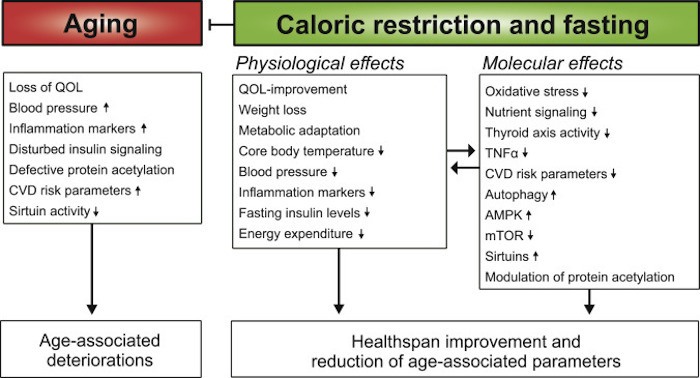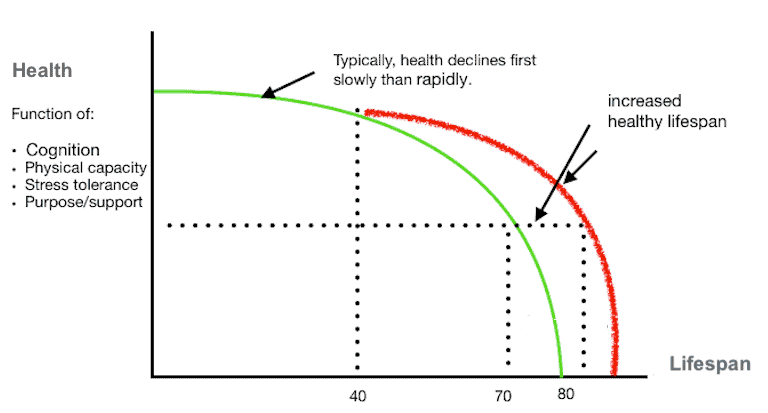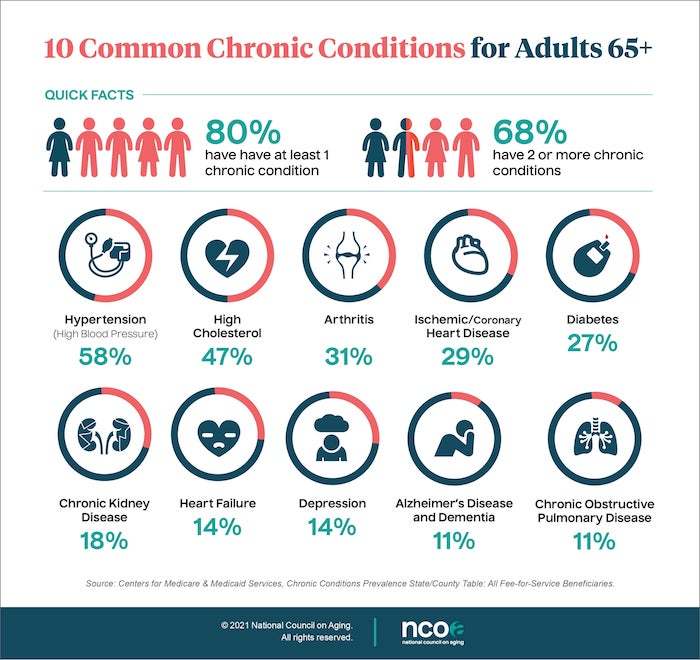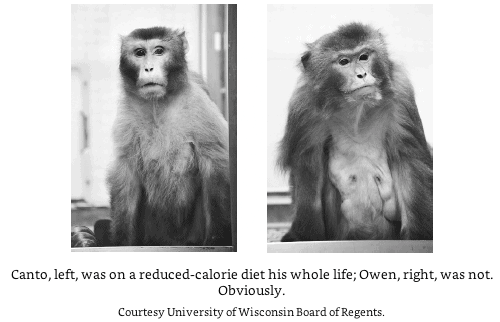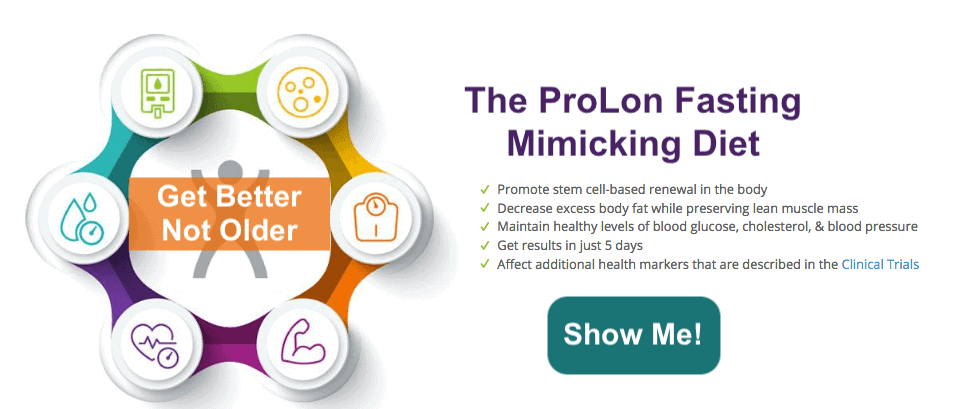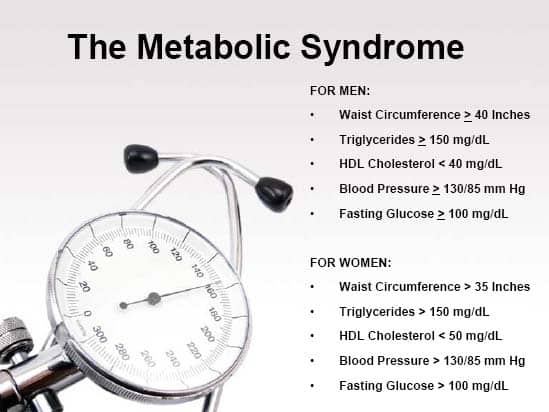7 Anti-aging Interventions Backed By Science, Part 1: CR and Fasting
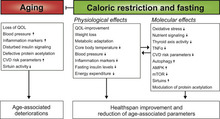
Various anti-aging interventions have been widely studied by scientists for many years. We now know of at least seven that can extend healthspan, and perhaps even lifespan as well. This is Part 1 and covers the role that caloric restriction and fasting have in promoting a long and strong life.
This guidance on anti-aging interventions is part of an online video course I'm creating about how to age better and live long and strong. If interested, become a Subscriber (it's free) to get my Sunday Newsletter and be notified when the course is available for enrollment.
If you love life, inevitably you will seek anti-aging interventions. The intent is not to extend life per se, but to extend healthspan — those years your healthy. Ideally, you want your life to end like it did for Jack LaLane. As I wrote in Five Biological Age Tests That Predict Your Real Age:
He died at 96, and yet up to the year prior to his death, Jack was still doing his daily workout routine. I don’t know how much younger Jack was biologically than his actual years on the planet, but how many 95 year-olds do you know that exercise vigorously every day?
Clearly, Jack lived his life on the red curve, and so can you if you adopt most of the seven anti-aging interventions I’m going to share with you here, and in Part 2 and 3.
If you're not already a Subscriber, go here to learn how to "bend your age curve" and improve longevity.
The Situation: We’re Living Longer, But Not Healthier
Currently, there are no anti-aging interventions that can stop aging. But there’s much you can do to slow down the aging process.
Our lifespan is inevitably accompanied by the aging process. It involves functional decline, a steady increase of a plethora of chronic diseases, and ultimately death. What we want is to cross out that chronic disease part and lengthen healthspan, possibly even extend life itself.
Life expectancy has improved in developed countries. In the United States, about 16.5% of the American population was 65 years old or over in 2019, and is expected to reach 22% by 2050, a significant increase from 1950 when only 8% of the population was 65 or over (1).
If we aged healthily, those statistics wouldn’t be a problem, but we don’t:
- In 2018, 51.8% of US adults had at least one chronic condition, and 27.2% had multiple chronic conditions (2)
- 80% of US adults 65 and older have at least one chronic condition, while 68% have two or more (3)
The one undeniable common denominator shared by most people with chronic disease is age. According to the World Health Organization, age itself remains the greatest risk factor for all major life-threatening disorders. Moreover, the number of people suffering from age-related diseases is anticipated to almost double over the next two decades (4).
Take obesity for instance.
In 2009–2010 almost 70% of the adult population in the USA was obese or overweight, and one in every three adults suffered from hypertension (5). Both obesity and hypertension represent major risk factors for stroke and cardiovascular disease. And although we know that weight loss and increase in physical activity can tremendously help prevent such age-associated diseases, only a small percentage of people have the discipline to change their lifestyle accordingly (6). The prevalence of age-related pathologies represents major psychological and social impediments as well as an economic burden that urgently needs appropriate interventions.
The Solution: Eat Less On A Regular Basis
Dietary regimens, drugs and supplements have been and continue to be evaluated for their ability to help slow the aging process, some with tantalizing results, mostly with yeast, worms, flies, mice and monkeys, but to a lesser but significant degree, also with humans.
What’s undisputed is that various cellular pathways, or signalling, that are involved in the aging process are “conserved” among organisms (7). That means that, generally speaking, how a worm ages on the molecular level is very similar as how you age. Whats more, the molecular mechanisms underlying aging-associated processes appear to be interconnected and affect the same pathways as those responsible for diseases such as cancer and cardiovascular disease and neurodegenerative disorders.
Thus, the approach that’s needed to identify anti-aging interventions to slow aging require a two-pronged approach:
- A greater understanding of the molecular mechanisms involved in the aging process; and
- Application of this knowledge in a practical manner.
Not to say that this is easy.
Intrinsic complexities and multifactorial causes underlie aging, making it extraordinarily difficult to parse out which anti-aging interventions may actually work to slow down the aging process, and perhaps one day to find those that might actually arrest aging, or even reverse it do some degree. (Although it’s plain to me that if you, say, reverse adult-onset diabetes and thereby increase your healthspan — which is very doable — you have obviously reversed the accelerated aging process that the diabetes ignited.)
What follows is a survey of the research literature on several anti-aging interventions which meet these three highly selective criteria:
- Promotion of healthspan and/or life extension;
- Validation in at least three model organisms; and
- Confirmation by at least three different laboratories.
And these are the few proposed aging interventions that have met such stringent criteria:
- Fasting regimens
- Caloric restriction
- Exercise
- Certain compounds (drugs and nutracueticals)
As mentioned, here in Part 1, I’ll cover the first two anti-aging interventions, caloric restriction and fasting, In Part 2, the third intervention — exercise. Finally, Part 3 will examine four of the handful of nutraceuticals and drugs that scientific studies indicate can be useful anti-aging interventions to some degree.
Read on for my review of what’s currently understood about caloric restriction and fasting as anti-aging interventions.
Caloric Restriction: #1 of 7 Anti-aging Interventions
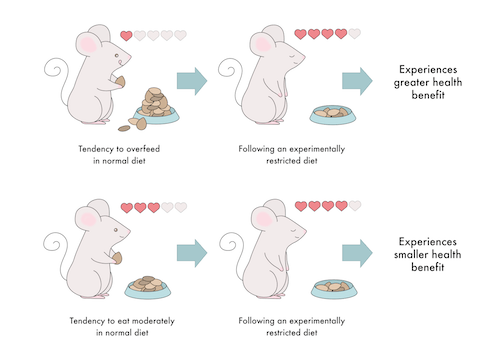
Credit: Harvard University https://sitn.hms.harvard.edu/flash/2020/can-calorie-restriction-extend-your-lifespan/
Simply put, caloric restriction (CR) is reducing caloric consumption without becoming malnourished. In mice, a CR of 30% increases lifespan. In humans, there’s some indication that a CR of around 15% may be most favorable against mortality during aging (8). CR reduces the release of growth factors like growth hormone, insulin, and insulin-like growth factor 1 (IGF1), which have been shown to accelerate aging and increase mortality in many organisms (9).
The effect of CR on healthspan and lifespan has been studied extensively for a long time. Nearly a hundred years ago, the connection between lower caloric intake and prolonged healthspan and lifespan was already described. Over all that time, CR has been shown to prolong mean and maximum lifespan in dogs, rodents, worms, flies and yeasts (10).
Notably, in rodents, moderate CR (8%) positively affects median (not maximal) lifespan, but a more severe (30%) dietary restriction increases lifespan by up to 50%, partly by delaying the emergence of chronic diseases (11).
I already mentioned that many cellular pathways that influence aging are “conserved” among many species. As concerns CR-mediated conservation, that’s actually an understatement, for with CR this conservation occurs among all eukaryotes. Eukaryotes include all living organisms other than the eubacteria (a type of bacterium) and archaebacteria (some sorta ancient intermediate group of microorganisms between bacteria and eukaryotes). So, eukaryotes (which includes us) are governed by a set of conserved nutrient signaling cellular pathways (12).
An Evolutionary Adaptation?
Scientists believe that the beneficial effects of CR on healthspan and in some cases lifespan may represent an adaptive evolutionary response to survive short-term famine conditions. If that’s true, then it appears that associated increase in lifespan due to the caloric restriction brought about by famine might be more prominent in short-lived species (like mice) than in long-lived ones (like primates).
Two renown studies have addressed the effects of CR on nonhuman primates, but had different and confusing outcomes: The UW (University of Wisconsin-Madison) study observed prolonged life from CR (13), while the NIA (National Institute on Aging) study did not (14). At first, these contradictory results perplexed the researchers until the respective nutrients used in the respective studies were compared.
What was discovered is that the high sugar (sucrose) concentration contained in the ad libitum diet of the control group (food is always available) in the UW study led to a shortened lifespan within the cohort of control monkeys, thus accounting for the lifespan extension when animals were fed a CR diet. So, in this case the researchers were unwittingly and artificially measuring a lifespan extension that resulted from the control cohort of monkeys having a lower baseline lifespan to begin with due to the sugar-laden diet, as compared to the cohort fed a better, although calorically-restricted, diet.
In contrast to the UW study, the ad libitum diet in the NIA study was healthier (less sugar), which allowed for longer lifespan in control animals to begin with, thereby blunting additional improvements in lifespan via CR.
It’s reasonable, therefore, to conclude that a healthy diet will confer some lifespan benefits without CR, and those on a bad diet (high sugar) should practice CR. When it comes to chronic illness, however, both studies underscore that CR increases healthspan in monkeys by reducing the risk for diabetes, cardiovascular disease and cancer.
Why Are Okinawans So Long-lived?
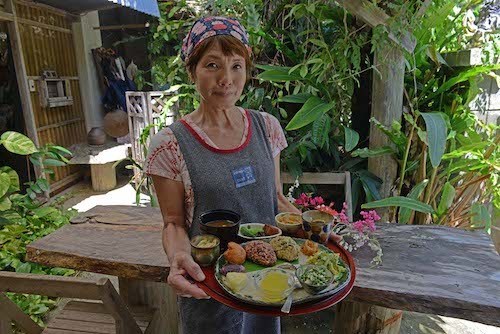
Credit: Japan Times https://www.japantimes.co.jp/life/2018/07/21/food/kitchens-of-longevity-the-culinary-secrets-of-age-old-okinawa/
Okinawans are the people who live on Okinawa, the fifth largest Japanese island. They live longer and healthier than most other nationalities, and the reason is thought to mainly be their diet (15). In comparison to the rest of the Japanese population — and the rest of the world — Okinawan people usually combine an above-average amount of daily exercise with a below-average food intake (16).
We know this outcome is due to lifestyle factors, not genetics, because Okinawan families that moved to Brazil and adopted a Western lifestyle that impacted both their diet and physical activity, they experienced weight gain and a drop in life expectancy of 17 years (17).
CR changes many parameters that benefit the aging human body, including (18):
- The transcriptome (the full range of messenger RNA or mRNA molecules expressed by an organism.)
- Hormonal status (in particular the serum concentration of IGF-1 and thyroid hormones)
- Oxidative stress (free radical damage)
- Inflammation (the chronic kind, not as a result of an injury)
- Mitochondrial function (the cells’ “energy factories”
- Glucose homeostasis (balanced blood sugar)
- Epigenetic modifications (how lifestyle factors turn genes on and off)
Clearly, CR can improve healthspan by limiting the severity of chronic disease, or avoiding it, but it’s not yet known if, and to what extent, these CR-induced parameters can extend lifespan. And perhaps for the vast majority of us, it doesn’t matter — because CR is hard to do and makes you miserable.
Sustenance on a severely restricted diet without malnutrition (around 30% CR) is arduous and is linked to chronic low weight and substantial side effects. Studies have shown that prolonged CR may decrease fertility and libido, create wound healing problems, and result in amenorrhea (absence of menstruation), osteoporosis, and decreased potential to combat infections. Female rats subjected to prolonged CR become infertile in a reversible fashion (19), and moderate CR may be harmful to lean human beings (20).
What we need is something that has the healthspan and possibly lifespan benefits conferred by CR without the pain. There are such things, and they’re often referred to as “CR mimics“, because they produce the health benefits of CR without actually doing CR.
CR Mimics Are Better Than Continuous CR
What qualifies as a CR mimic is something that would provide you the same health or lifespan benefits of continuous CR. There are several CR mimics that appear to be as beneficial to CR, but are healthier and easier to sustain; among them:
- The alternate day fasting diet (21, 22)
- The ‘5:2’ intermittent fasting diet (23)
- A 48 hr fast once or twice each month (24)
(There are also certain drugs and nutraceuticals that are Cr mimics, which I’ll address in Part 2.)
Ample evidence indicates that fasting regimens exert anti-aging effects. A lower age-associated morbidity and a longer lifespan were observed among Spanish home nursing residents performing alternate day fasting, where residents fasted every other day with unrestricted food supply on the non-fasting day (25).
Volunteers in the Biosphere II project experienced an unforeseen, severe CR, which resulted in metabolic and hormonal changes similar to those observed in CR-induced longevity increase in rodents. These changes included low circulating glucose, insulin, and glycated hemoglobin levels, as well as a decrease in both cholesterol levels and blood pressure (26).
During a fast, the body undergoes major metabolic changes to meet its energy needs. Glycogen stores are first depleted over the course of 12 to 24 hours. Then free fatty acids already appear in the bloodstream, at which point the body’s main source of energy then comes from ketolysis, which generates acetyl-CoA, and gluconeogenesis-dependent generation of approximately 80 g of glucose each day, which is mainly consumed by the brain. (Interestingly, a ketone ester diet, which seemingly recapitulates energy metabolism during fasting, alleviates proteopathic (abnormal protein structures) and behavioral deficiencies in a mouse model of Alzheimer’s disease (27).)
Scientists think that repeated fasting and eating cycles—as practiced during periodic fasting regimens—may circumvent the negative side effects of permanent CR, while simultaneously capturing the benefits. For instance, rats on an alternate day fasting protocol live up to 83% longer than their normally fed counterparts, and a 24 hr fasting period every 4 days is sufficient to promote a significant lifespan extension (28).
Such an intermittent fasting strategy may even yield positive effects despite overconsumption of calories. Mice that were fed a high-fat diet in a time-restricted manner (they had regular fasting breaks) had lower inflammatory markers, had no fatty liver, and were slim compared to mice with equivalent total number of calories consumed ad libitum (29).
CR has also been shown to be beneficial for cognitive health. A three to four month period of CR improves verbal memory in overweight women and aged people (30), despite the fact that the brain relies mainly on glucose. Thus, even though deprived of normal levels of glucose during the reduced caloric cycles, the glucose-dependent brain can improve.
Again, as previously mentioned, the benefits of cycling between ad libitum feeding and fasting may be rooted in evolution, because this form of feeding pattern may actually reflect mammalian adaptation to food by overeating in times of nutrient abundance (say, after a successful hunt) and then eating littel to nothing until food again became plentiful. Indeed, this is also how native tribes live today, many of whom show no signs of age-associated diseases, such as cancer, neurodegeneration, diabetes, cardiovascular disease, or hypertension (31). (See my post on why the Tsimane tribe has no heart disease.)
Fasting: #2 of 7 Anti-aging Interventions
We already delved into fasting, but that was within the context of short-term fasting combined with regular eating, such as the 5:2 or alternate day fasting regimes. Now we’re going to examine how longer-term fasting can impact health, healthspan and longevity, but understand that there are downsides to fasting depending on your current health status and how long you intend to fast. Scientists like world renown fasting expert Dr. Valter Longo recommend that you don’t fast for more than a couple of days without medical supervision, unless you’re doing something like Longo’s ProLon Fasting Mimicking Diet. (Watch me guide my 88 year-old mother through the ProLon fast.)
Fasting rituals have been around for as long as we have. They have been a part of the Buddhist, Christian, Hindu, Jewish, and Muslim religions, as well as African animistic religions. That said, in the modern age, people strenuously avoid fasting for more than a few hours, despite the value of doing so.
Fasting Results in Improved Cancer Outcomes (In Mice)
Periodic fasting has been shown to exert a series of beneficial effects on healthspan by:
- Minimizing the risk of developing age-related diseases, such as neurodegeneration, cancer, or cardiovascular disease, in animal models and, probably, humans (32).
- Mitigating the deleterious consequences of Alzheimer’s, Parkinson’s, and Huntington’s diseases as well as frontotemporal dementia in various mouse models. (33).
Fasting can also improve cancer outcomes, at least for mice. When combined with chemotherapy, a two to three day fast (a long time to fast for a mouse) improves the usefulness of a variety of chemotherapeutic drugs, while reducing their negative side effects in mice (34). A treatment combining fasting and chemotherapy made 20% to 60% of mice cancer-free when inoculated with highly aggressive tumors like glioblastoma or pancreatic tumors, which killed 100% of the cohort that was treated with chemotherapy alone (35).
Cancer cells do not stop proliferating, and thus require fuel (energy) in the form of enhanced glucose metabolism to meet their high energy and biosynthetic demands. When glucose is deprived through fasting, cancer cells simply die.
Fasting Lowers Hypertension (In Humans)
The single most effective way to lower hypertension is the practice of fasting. A medically supervised, two-week water-only fast of borderline hypertensive volunteers resulted in their blood pressure readings below 120/80 mm Hg in 82% of that cohort. Ten days of water-only fasting normalized blood pressure readings in all hypertensive patients who were taking anti-hypertensive medication (36).
Fasting Reduces Metabolic Syndrome Risk Factors
Metabolic syndrome is a complex amalgamation of several disease states you want to avoid:
The metabolic syndrome includes a cluster of risk factors, such as high blood pressure, dyslipidemia (a high level of cholesterol, triglycerides, or both) or a low high-density lipoprotein (HDL) cholesterol level and insulin resistance, that markedly enhances the risk for coronary artery disease, stroke, and diabetes when combined with obesity.
Several periodic fasting strategies have been shown to mitigate the cluster of metabolic syndrome risk factors in overweight and obese subjects, which coincide with increases in insulin sensitivity and lipolytic activity, which is the metabolic pathway through which lipid triglycerides are used to mobilize stored energy during fasting or exercise (37, 38, 39).
In the case of overweight women, marked reduction of metabolic disease markers, such as high blood pressure and levels of circulating IGF-1 and C-reactive protein, has been reported in this cohort when subjected to a two day per week fast over six months (40).
Since body weight is a big factor in metabolic syndrome, it’s helpful to know how much is too much. The standard way to assess healthy body weight is the BMI (body mass index), although it is very inaccurate for people with above average muscle mass. Consequentially, BMI is an insufficient indicator of body composition and percent body fat. For example, a well-trained athlete may have a BMI equivalent to that of an obese person because of the athlete’s higher muscle mass density. (See How Much Should You Weigh.)
A better indicator of healthy weight is the waist/hip ratio, as it not only is a more accurate indicator for body fat, but also can predict the odds of dying from cardiovascular diseases, given that a low waist/hip ratio is associated with a lower mortality risk (41).
Fasting Improves Cognitive Health and Asthma
Studies on human twins convincingly demonstrate that adiposity (body fat) increases the probability of age-related dementia and Alzheimer’s disease (42). Similarly, aged men on an eating plan involving two days of fasting each week lose weight and experienced fewer bouts of depression (43).
Moreover, alternate day fasting over a period of two to four weeks reduces asthma-related symptoms and markers of oxidative stress in overweight people suffering from asthma (44).
Given all these studies and evidence, it would natural to conclude that fasting for a few days here and there can heal any ill, and perhaps extend lifespan. However, the ability of various fasting strategies to improve health might be limited — as the two studies on monkeys cited above suggests — if they are not integrated with diets that have health-associated benefits, such as the Mediterranean diet or the Okinawa lower-protein diet. (There’s also my favorite, the Gorilla Diet.)
 Again I emphasize that you should not plunge into multiple-day fasting without medical guidance, especially if you have health issues. Fasting can be harmful to people who are children, underweight, or have some disease state, such as type 1 diabetes or extreme hypertension. In such situations, fasting can result in severe health consequences, and even death unless performed under medical supervision.
Again I emphasize that you should not plunge into multiple-day fasting without medical guidance, especially if you have health issues. Fasting can be harmful to people who are children, underweight, or have some disease state, such as type 1 diabetes or extreme hypertension. In such situations, fasting can result in severe health consequences, and even death unless performed under medical supervision.
Your Anti-aging Interventions Takeaway
In this post we examined two of seven anti-aging interventions supported by scientific studies: caloric restriction (CR) and fasting.
These are the four things to remember:
(1) Continuous CR is when you eat as much as 30% fewer calories than normal. If done without incurring malnutrition — meaning that you get high quality and balanced micro and macronutrients — the chances are good that you will increase healthspan, possibly even lifespan. That said, most people wouldn’t want to live longer under a continuous CR regimen because they’d be so miserable.
(2) A CR scheme that alternatives between under-feeding and regular feeding can approximate the benefits of continuous CR and is easier to maintain. There are several ways to doing CR on an intermittent bassis, such as:
- Eat fewer calories on some days, and the regular amount on other days
- Eat during an eight-hour window, fast during 16 hours (including sleep)
- Alternate days between eating and fasting
- Eat for five days, fast for two
- Do the ProLon Fasting Mimicking Diet
(3) CR can improve a wide array of chronic diseases, such as metabolic syndrome, cognitive disorders and obesity.
(4) Fasting is CR on speed, and thereby accelerates the health benefits of CR, but multiple-day fasting is not only difficult to do, it can be dangerous. Whether you’re healthy or not, if you want to fast for multiple days, be guided by a health professional.
In Part 2, I will discuss two other significant, scientifically-confirmed anti-aging interventions: exercise and pharmaceuticals (or nutraceuticals, which are available without prescription). If you’re not a Subscriber, get on the list now so you’ll be notified once Part 2 is published. Go here for Part 2.
Last Updated on February 7, 2024 by Joe Garma

